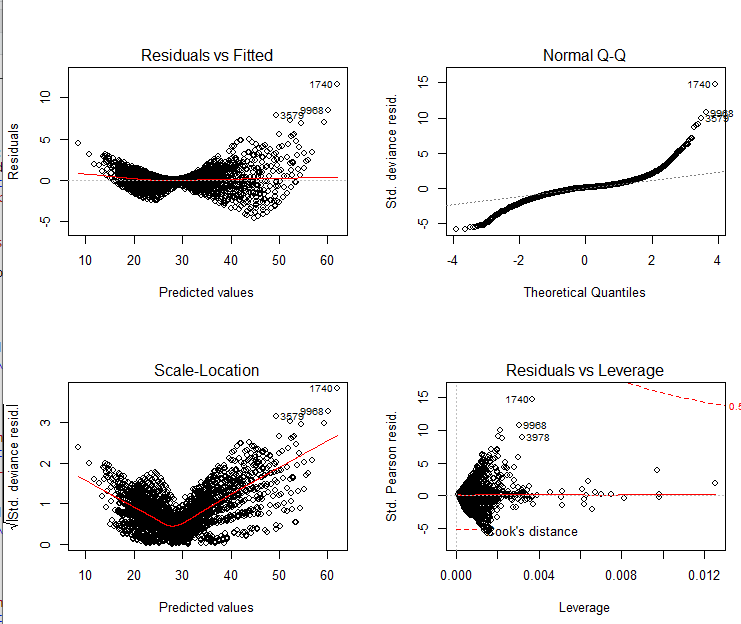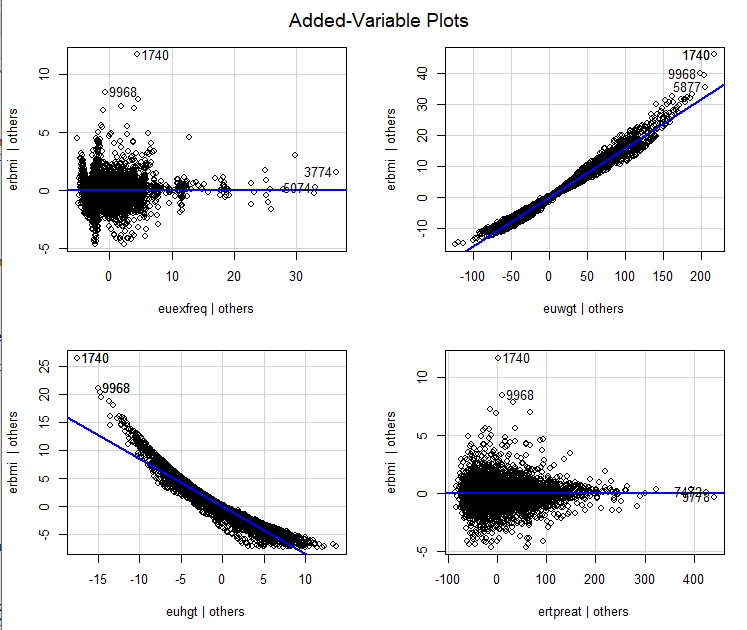
# libraries we'll need library(car) # for avplots library(tidyverse) # for general utility functions # read in our data bmi_data <- read_csv("../input/eating-health-module-dataset//ehresp_2014.csv") %>% filter(erbmi > 0) # remove rows where the reported BMI is less than 0 (impossible) nyc_census <- read_csv("../input/new-york-city-census-data/nyc_census_tracts.csv")
# fit a glm model model <- glm(erbmi ~ euexfreq + euwgt + euhgt + ertpreat, # formula data = bmi_data, # dataset family = ("gaussian")) # fit a linear model
# output plots in a 2 x 2 grid par(mfrow = c(2,2)) # diagnostic plots plot(model)

# examine our model summary(model)

# added-variable plots for our model avPlots(model)

结论
看这些图,我们可以在右上角看到随着euwgt(体重)的增加,erbmi(体重指数,我们试图预测的变量)也在增加。看左下角我们可以看到,随着euhgt(高度)的增加,erbmi实际上在减少。所以身高和体重都很重要,但它们有相反的效果!我们也可以从模型总结中看出这一点,因为euwgt的估计值为正,而euhgt的估计值为负。
另外两个图显示这些变量和我们要预测的变量之间没有很强的关系,我们已经从模型中算出来了。


